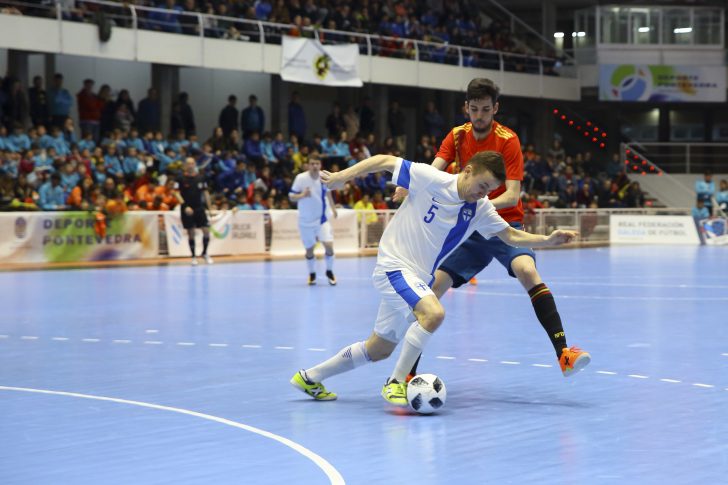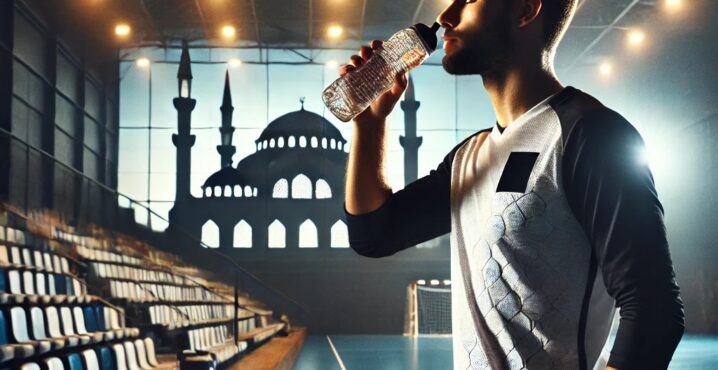Estimated reading time:2 minutes, 38 seconds
This research was by Ville Vähäkoitti for his Master Thesis, Science of Sports Coaching and Fitness Testing, Spring 2017, Faculty of Sport and Health Sciences at the University of Jyväskylä and was supervised by Prof. Keijo Häkkinen
ABSTRACT
Physical performance of Finnish futsal players, analysis of intensity and fatigue in official futsal games. Faculty of Sport and Health Sciences, University of Jyväskylä, Science of Sport Coaching and Fitness Testing, Master Thesis, 60pp.
Introduction
Futsal is a high-intensity indoor sport where a burst of multi-planar movements varies with short periods of rest. The sport is played on a court-sized 40 x 20 m for two halves of 20 minutes, where the clock is stopped when the ball is out of play. The purpose of this study was to find out the physical performance of Finnish futsal players and analyse intensity and fatigue in official futsal games.
Methods
Two Finnish Futsal League teams were involved (n = 19), age 26.3 (± 3.0 years), body mass 76.4 (± 6.2 kg), height 178.7 (± 5.7 cm), BMI 23.9 (± 1.4 kg/m2) and body fat % 12.3 (± 4.0 %). Measurement were done in the middle of the season 2016-2017, during two months’ period. Two games from both teams were analysed. Measuring included physical performance tests (sprint test 5-m and 20-m, agility test, CMJ, isometric leg press and maximal treadmill running test) and game measurements (HR, movement distances and velocities, playing time, accelerations and deceleration). CMJ and lactate were measured before, middle and after futsal game to assess fatigue.
Results
Sprint times were 1.03 (± 0.04 s) in 5-m and 3.01 (± 0.07 s) in 20-m. The agility test time was 6.87 (± 0.25 s). CMJ result was 41.8 (± 5.6 cm) and isometric leg press 5327 (±1070 N). In the maximal treadmill running test HRmax was 191.6 (± 9.5 bpm), VO2max 59.8 (± 5.4 ml/kg/min) and VEmax 171.9 (± 20.8 l/min). Futsal players moved on average 4463.0 (± 1169.3 m) on intensity 54.0 (± 13.2 m/min) during the futsal games. Sprinting occurred on average 39.7 (± 17.2) times in the games. HRmax achieved during the futsal games was 191.6 (± 9.9 bpm), and average HR 147.0 (± 16.9 bpm). Fatigue did not occur during or after the futsal games when measured as CMJ or lactate (p > 0.05).
Conclusions
From the results of the physical performance tests, it seems that Finnish futsal player’s physical fitness is comparable to play futsal at high level. During Finnish Futsal League games the distance moved is similar to those measured in literature, but the intensity lower when expressed as % HRmax, distance moved in one minute or indifferent speed zones. Because fatigue was not evident during the games, higher-intensity tactics or fewer substitutions to the key players could be used. In general, consistency in research methods would ease the comparison of different studies. More futsal research is needed to understand the fundamentals of the sport that is growing and evolving constantly.
To download the research hoover over and click on this link: http://bit.ly/2OdWIbx
If you like the information provided, you can read more about Futsal research by going to the top navigation bar or click here
If you like this article and would like to keep updated on Futsal news, developments, etc then please submit your email below in the Subscribe to Futsal Focus option.
Follow Futsal Focus by clicking on Facebook, Twitter or Instagram or on the social media buttons on the website.

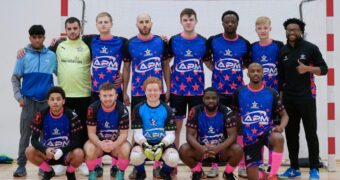

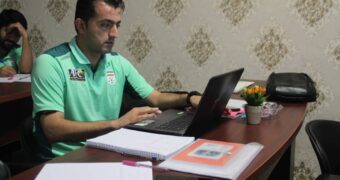

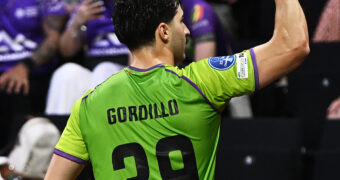



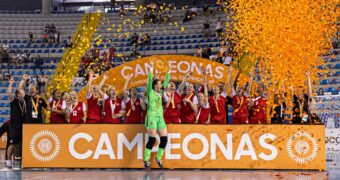
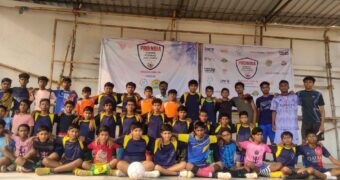
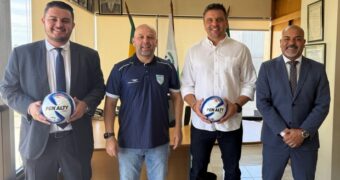




![Validate my RSS feed [Valid RSS]](https://www.futsalfocus.net/wp-content/uploads/2020/01/valid-rss-rogers.png)

